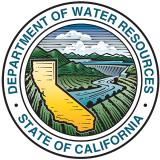After a soggy start, California and Nevada remain in drought as the wet season comes to a dry close
Register here for the March 28 California-Nevada Drought & Climate Outlook Webinar.
Key Points
- January and February 2022 were the driest on record for those two months for much of the California and Nevada region. The dry January and February have decreased the odds of reaching normal water year precipitation and have led to the continuation of drought throughout the region.
- Extended range forecasts indicate a continuation of a dry weather pattern through the end of March for California and Nevada, bringing the climatological wet season to a dry close.
The U.S. Drought Monitor (USDM) is updated each Thursday to show the location and intensity of drought across the country. Drought categories show experts’ assessments of conditions related to dryness and drought including observations of how much water is available in streams, lakes, and soils compared to usual for the same time of year.
California/Nevada conditions as of March 8, 2022:
- 100% of California is experiencing Moderate (D1) to Exceptional (D4) Drought (12.82% in D3, 0% in D4)
- California population in drought: 37,223,546
- 100% of Nevada is experiencing Moderate (D1) to Exceptional (D4) Drought (28.13% in D3, 7.5% in D4)
- Nevada population in drought: 2,700,551
U.S. Drought Monitor Categories
The U.S. Drought Monitor (USDM) is updated each Thursday to show the location and intensity of drought across the country. Drought categories show experts’ assessments of conditions related to dryness and drought including observations of how much water is available in streams, lakes, and soils compared to usual for the same time of year.
California/Nevada conditions as of March 8, 2022:
- 100% of California is experiencing Moderate (D1) to Exceptional (D4) Drought (12.82% in D3, 0% in D4)
- California population in drought: 37,223,546
- 100% of Nevada is experiencing Moderate (D1) to Exceptional (D4) Drought (28.13% in D3, 7.5% in D4)
- Nevada population in drought: 2,700,551
Current Conditions
- According to the U.S. Drought Monitor, the driest January and February on record for much of the California and Nevada region has led to drought degradations over the past 8 weeks, countering improvements made in late 2021. More degradation is likely.
- Most of the region has received between 50%–90% of normal precipitation since the start of the water year (Oct 1, 2021). The eastern side of the Sierra Nevada has received above-normal precipitation, while southeast California and southern Nevada have received between 30%–10% of normal precipitation.
- Since October of 2019, the beginning of the current drought, much of the region is missing over half a year's worth of normal precipitation. Parts of Northern California are missing between 1.25–1.75 years’ worth of precipitation.
- Water storage, represented here as reservoir plus snowpack, in the Southern Sierra is at about 60% of normal for the Sierra Nevada for this time of year. Northern Sierra water storage remains the lowest relative to normal for this time of year.
- Snow drought has expanded and intensified across the West, including California-Nevada. In California, the driest January and February in state history has led to a March 1 statewide snowpack of less than 70% of average, down from 160% at the start of the new year. The Klamath Basin, which straddles the California-Oregon border, has particularly low snowpack for this time of year.
- The odds of reaching water year normal precipitation, as of March 1, have decreased to less than 20% for much of the region, with the exception of the eastern side of Sierra Nevada and in eastern Humboldt county, which show close to 100% odds.
- California Governor Newsom’s administration announced on March 13 that it is spending an additional $22.5 million to respond to the immediate drought emergency, and on March 4 California Department of Water Resources (DWR) awarded $49 million to help small communities prepare for continued drought conditions. On February 23, the U.S. Bureau of Reclamation announced an initial 2022 allocation for the Central Valley Project contractors, some being 0%. State and local leaders are calling upon Californians to conserve water.
- Lake Powell is hovering just above the target elevation of 3,235 ft and is forecasted to drop below this target elevation in the coming week. Spring run off will likely bring it above this target threshold.
U.S. Drought Monitor 8-Week Change Map
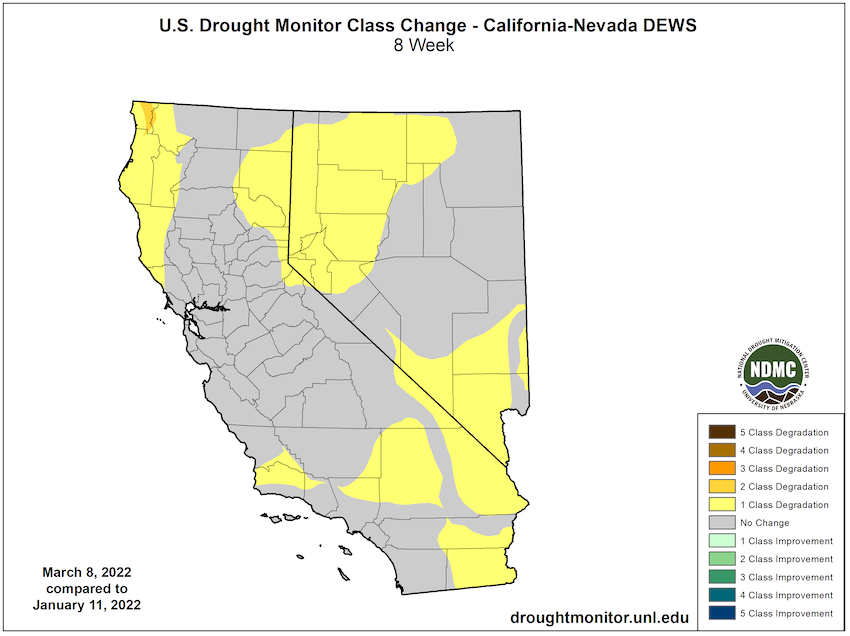
January–February 2022 Precipitation Percentile
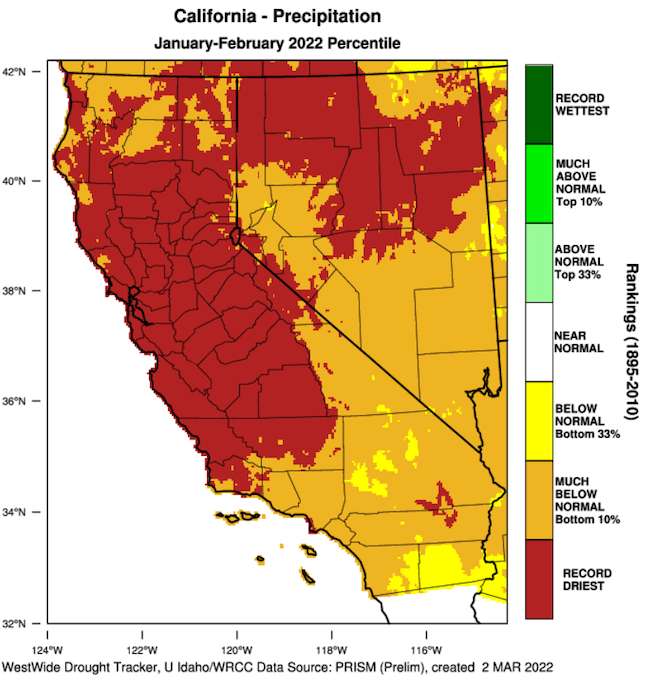
Percent of Normal Precipitation: Water Year 2022
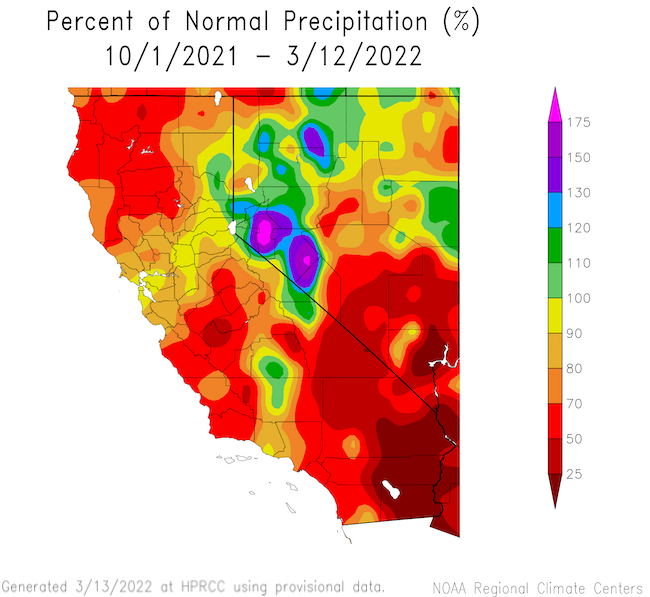
Odds of Reaching Water Year Normal Precipitation
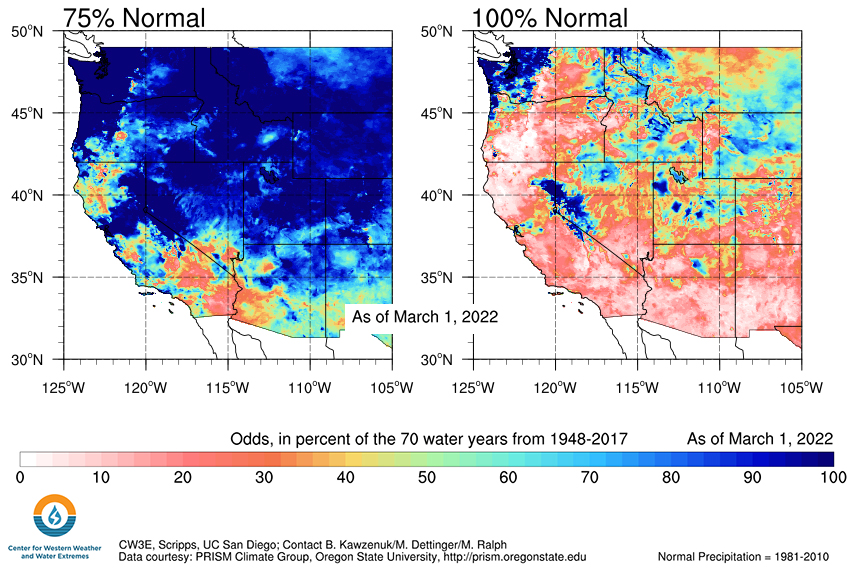
Normal Water Years' Worth of Missing or Excess Precipitation
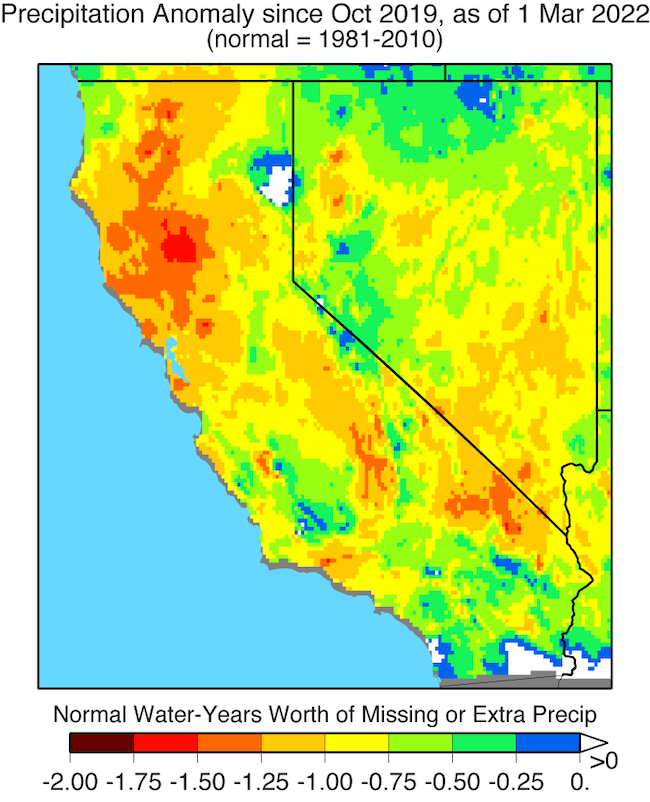
Water Storage + Snowpack for Sierra Nevada Reservoirs and Lake Tahoe
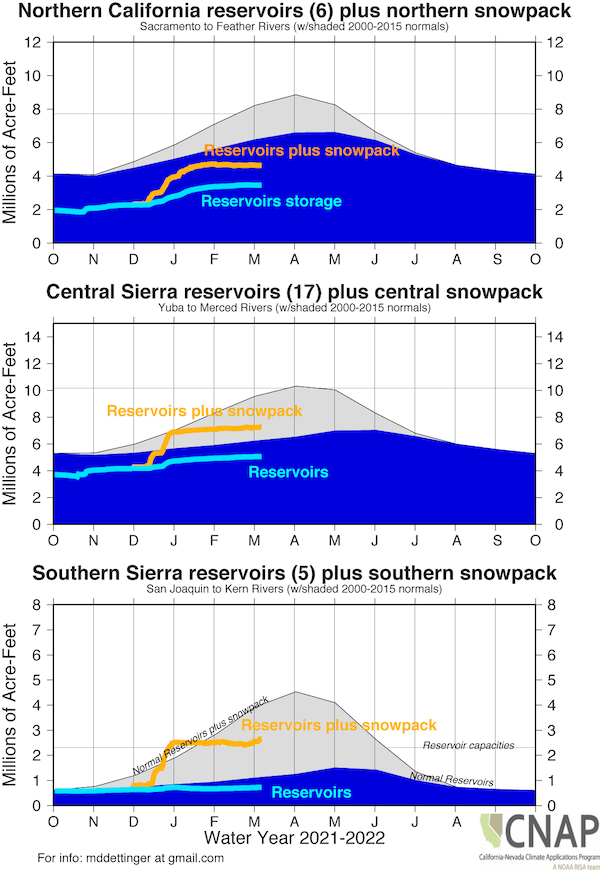
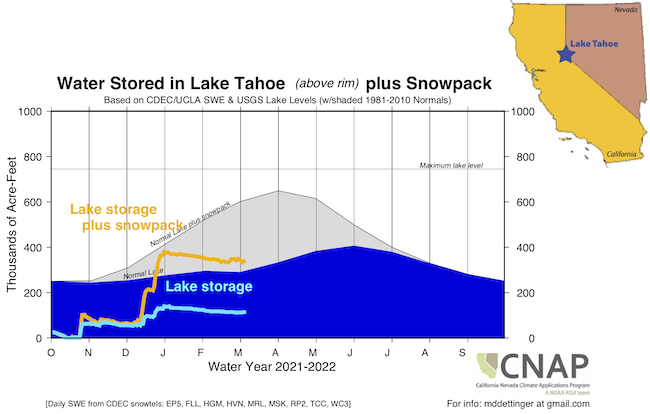
Drought and Climate Outlook
El Niño–Southern Oscillation (ENSO)
NOAA’s ENSO alert system status is currently a La Niña Advisory. La Niña is favored to continue into the Northern Hemisphere summer (53% chance during June–August 2022), with a 40%–50% chance of La Niña or ENSO-neutral thereafter. For more information, please check out the NOAA ENSO blog.
Subseasonal to Seasonal Drought, Temperature, and Precipitation Outlooks
According to the NOAA National Weather Service’s Climate Prediction Center, the next three months’ forecasts show drought persisting across California and Nevada as equal chances above/below/normal to below-normal precipitation are forecasted across the region. Equal chances of above/below/normal to above-normal temperatures are also forecasted. Updated forecasts will be released on Thursday March 17th by the National Weather Service.
The Center for Western Weather and Water Extremes’ latest outlook shows disagreement amongst the forecast models on atmospheric river activity in the coming weeks. However, models show moderate-to-high confidence in ridging activity off the coast of California, indicating a drier California.
Seasonal Drought Outlook: March 1–May 31, 2022
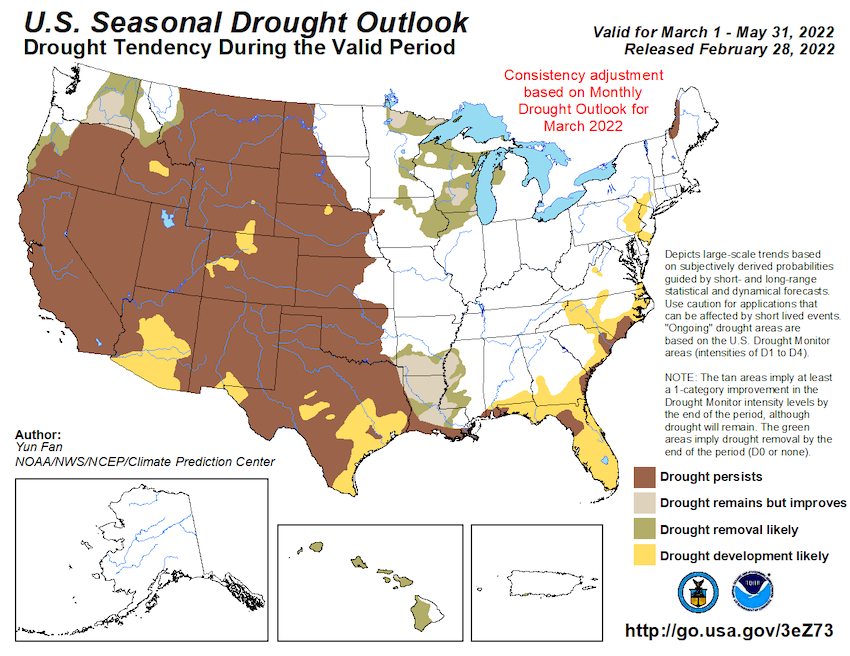
Seasonal (3-Month) Temperature and Precipitation Outlooks
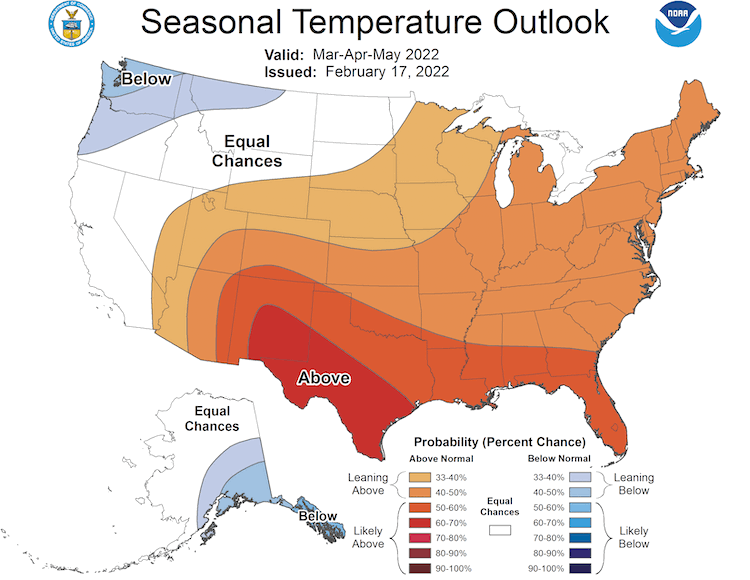
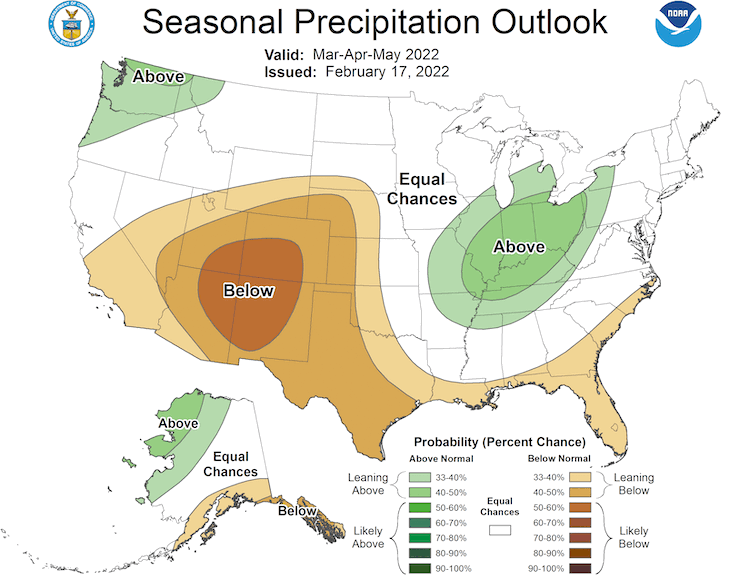
Drought Early Warning Resources
Prepared By
Amanda Sheffield
California-Nevada DEWS Regional Drought Information Coordinator, NOAA/NIDIS, CIRES
Julie Kalansky
California Nevada Applications Program (CNAP), Scripps Institution of Oceanography
This drought status update is issued in partnership between the National Oceanic and Atmospheric Administration (NOAA), the California-Nevada Applications Program, a NOAA RISA team, and the Western Regional Climate Center at the Desert Research Institute to communicate the current state of drought conditions in California-Nevada based on recent conditions and the upcoming forecast. NIDIS and its partners will issue future drought status updates as conditions evolve.


